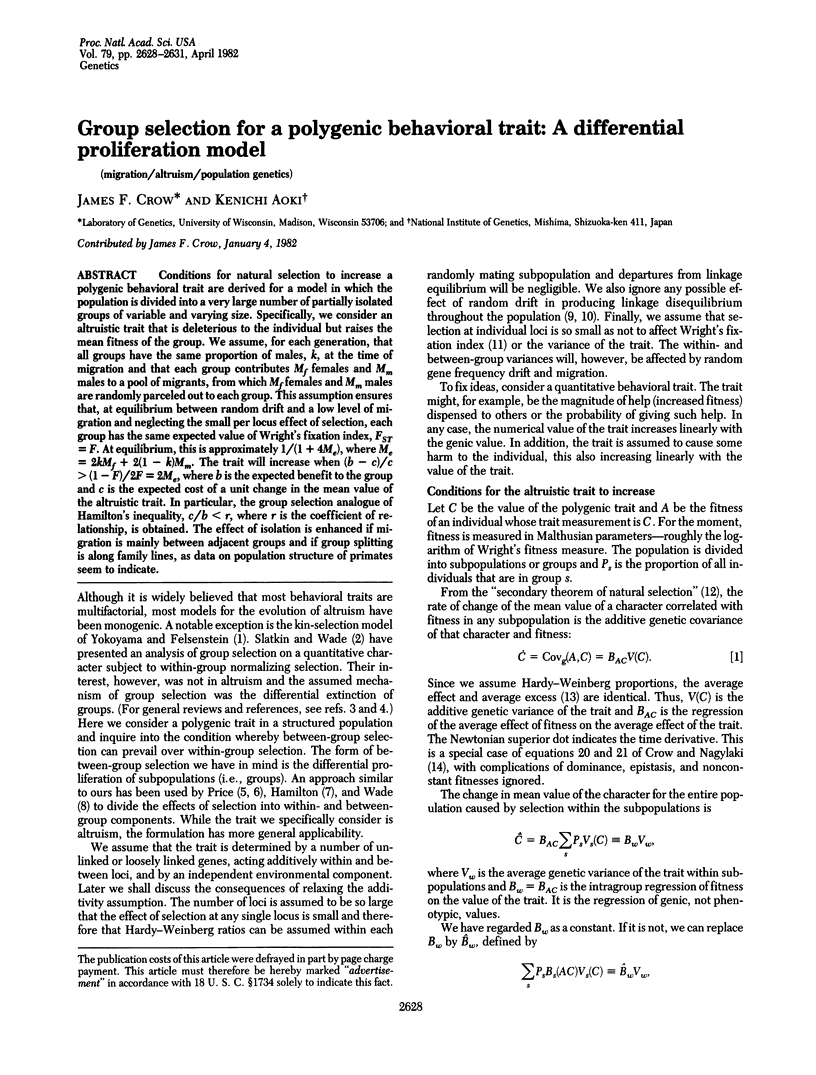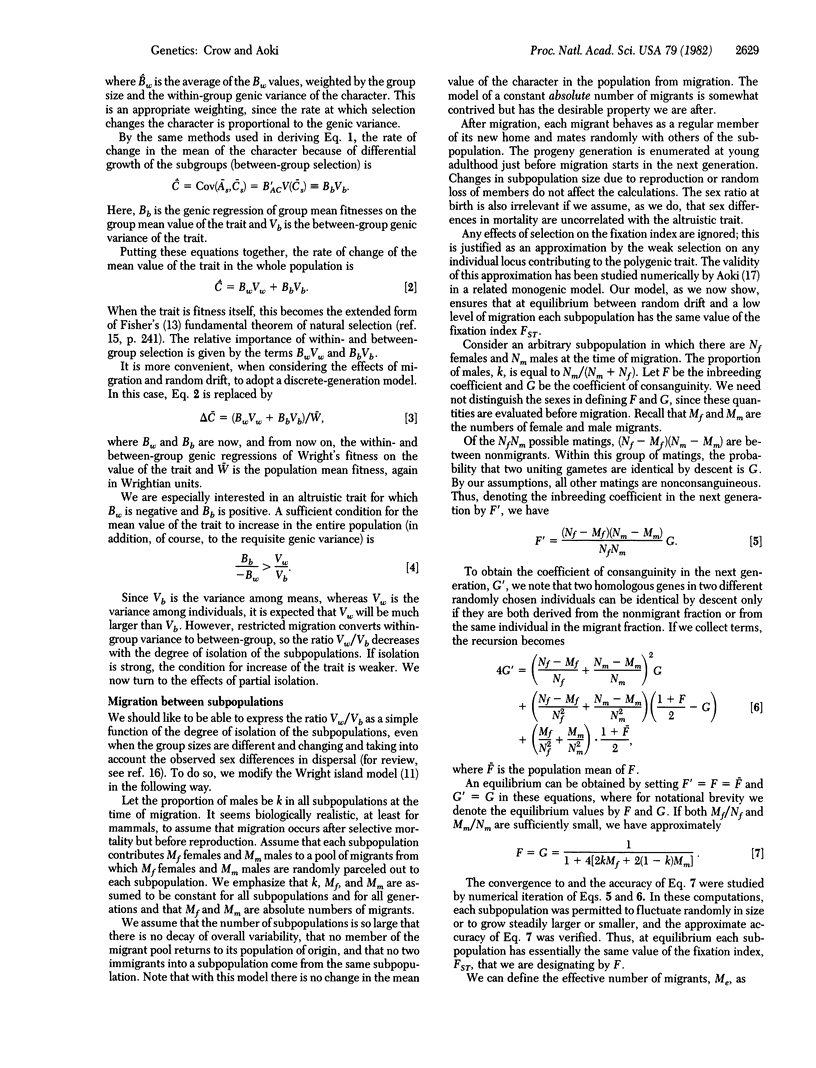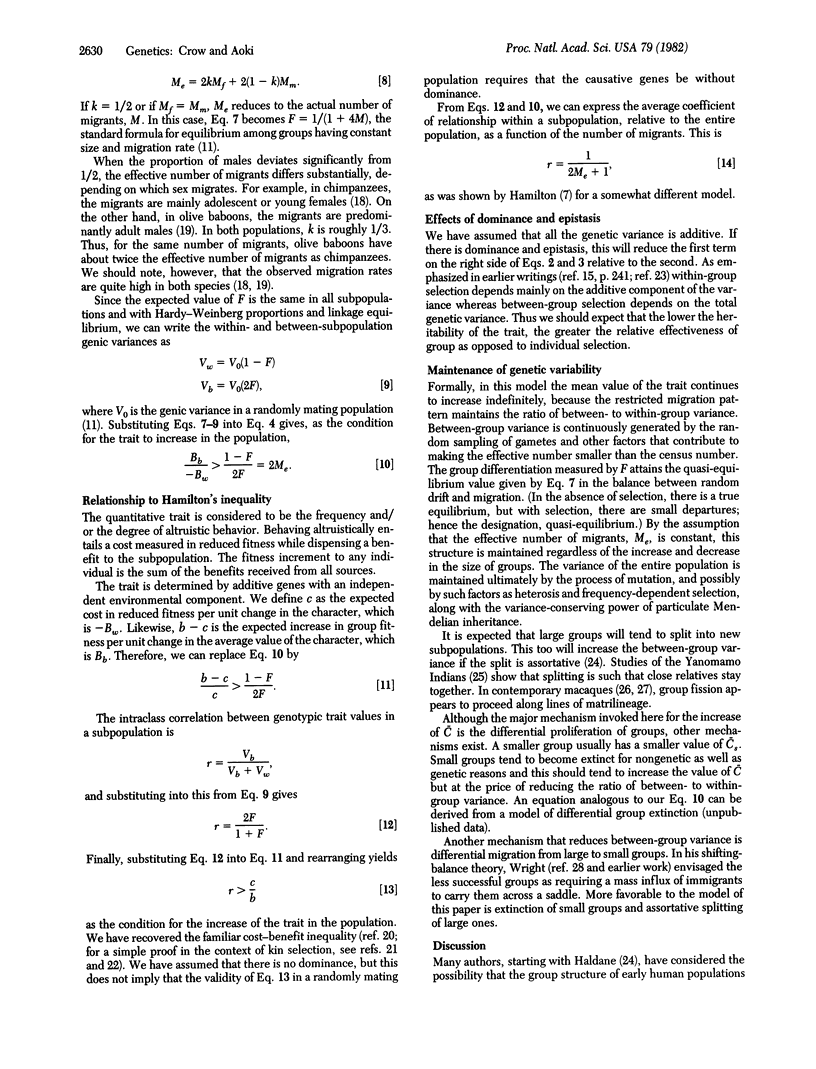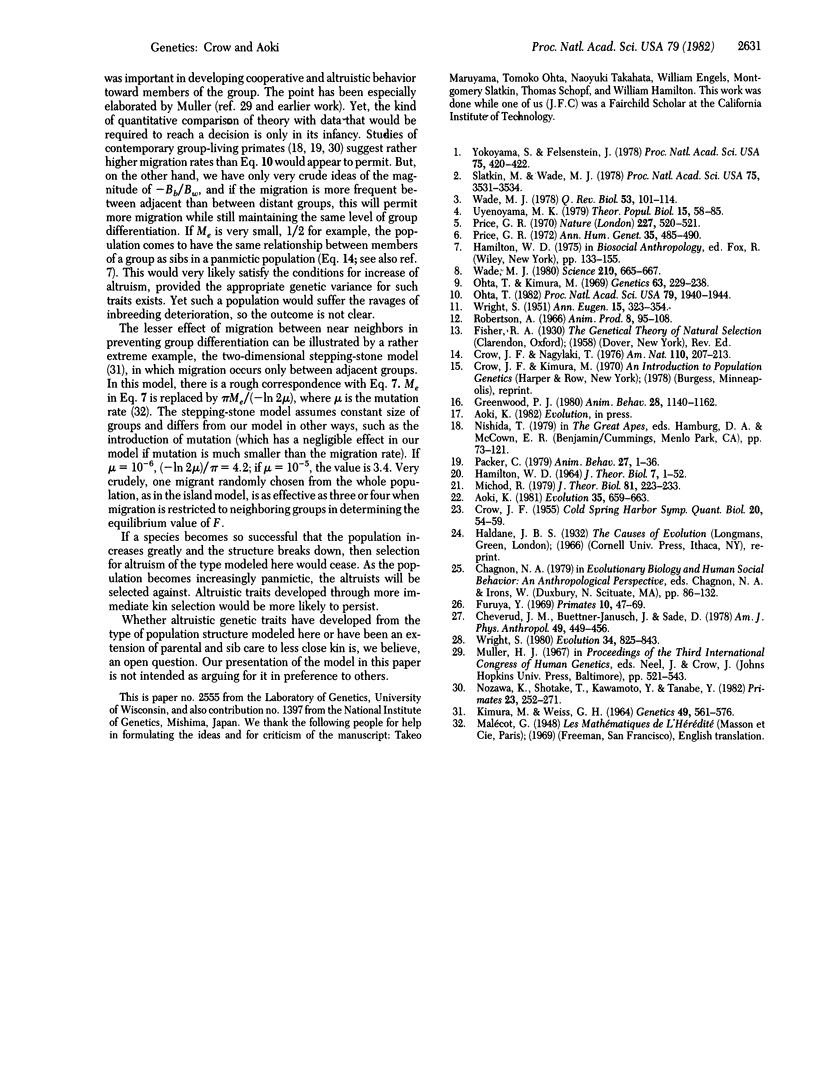Abstract
Conditions for natural selection to increase a polygenic behavioral trait are derived for a model in which the population is divided into a very large number of partially isolated groups of variable and varying size. Specifically, we consider an altruistic trait that is deleterious to the individual but raises the mean fitness of the group. We assume, for each generation, that all groups have the same proportion of males, k, at the time of migration and that each group contributes Mf females and Mm males to a pool of migrants, from which Mf females and Mm males are randomly parceled out to each group. This assumption ensures that at equilibrium between random drift and a low level of migration and neglecting the small per locus effect of selection, each group has the same expected value of Wright's fixation index, FST = F. AT equilibrium, this is approximately 1/(1 + 4Me), where Me = 2kMf + 2(1 - k)Mm. The trait will increase when (b - c)/c greater than (1-F)/2F=2Me, where b is the expected benefit to the group and c is the expected cost of a unit change in the mean value of the altruistic trait. In particular, the group selection analogue of Hamilton's inequality, c/b less than r, where r is the coefficient of relationship, is obtained. The effect of isolation is enhanced if migration is mainly between adjacent groups and if group splitting is along family lines, as data on population structure of primates seem to indicate.
Full text
PDF



Selected References
These references are in PubMed. This may not be the complete list of references from this article.
- CROW J. F. General theory of population genetics: synthesis. Cold Spring Harb Symp Quant Biol. 1955;20:54–59. doi: 10.1101/sqb.1955.020.01.007. [DOI] [PubMed] [Google Scholar]
- Cheverud J. M., Buettner-Janusch J., Sade D. Social group fission and the origin of intergroup genetic differentiation among the rhesus monkeys of Cayo Santiago. Am J Phys Anthropol. 1978 Nov;49(4):449–456. doi: 10.1002/ajpa.1330490404. [DOI] [PubMed] [Google Scholar]
- Hamilton W. D. The genetical evolution of social behaviour. II. J Theor Biol. 1964 Jul;7(1):17–52. doi: 10.1016/0022-5193(64)90039-6. [DOI] [PubMed] [Google Scholar]
- Kimura M, Weiss G H. The Stepping Stone Model of Population Structure and the Decrease of Genetic Correlation with Distance. Genetics. 1964 Apr;49(4):561–576. doi: 10.1093/genetics/49.4.561. [DOI] [PMC free article] [PubMed] [Google Scholar]
- Michod R. Genetical aspects of kin selection: effects of inbreeding. J Theor Biol. 1979 Nov 21;81(2):223–233. doi: 10.1016/0022-5193(79)90162-0. [DOI] [PubMed] [Google Scholar]
- Ohta T., Kimura M. Linkage disequilibrium at steady state determined by random genetic drift and recurrent mutation. Genetics. 1969 Sep;63(1):229–238. doi: 10.1093/genetics/63.1.229. [DOI] [PMC free article] [PubMed] [Google Scholar]
- Ohta T. Linkage disequilibrium due to random genetic drift in finite subdivided populations. Proc Natl Acad Sci U S A. 1982 Mar;79(6):1940–1944. doi: 10.1073/pnas.79.6.1940. [DOI] [PMC free article] [PubMed] [Google Scholar]
- Price G. R. Extension of covariance selection mathematics. Ann Hum Genet. 1972 Apr;35(4):485–490. doi: 10.1111/j.1469-1809.1957.tb01874.x. [DOI] [PubMed] [Google Scholar]
- Price G. R. Selection and covariance. Nature. 1970 Aug 1;227(5257):520–521. doi: 10.1038/227520a0. [DOI] [PubMed] [Google Scholar]
- Robertson P. L. The role of the political usurper: MaCBeth and Boris Godounov. Am Imago. 1966 Summer;23(2):95–108. [PubMed] [Google Scholar]
- Slatkin M., Wade M. J. Group selection on a quantitative character. Proc Natl Acad Sci U S A. 1978 Jul;75(7):3531–3534. doi: 10.1073/pnas.75.7.3531. [DOI] [PMC free article] [PubMed] [Google Scholar]
- Wade M. J. Kin selection: its components. Science. 1980 Nov 7;210(4470):665–667. doi: 10.1126/science.210.4470.665. [DOI] [PubMed] [Google Scholar]
- Yokoyama S., Felsenstein J. A model of kin selection for an altruistic trait considered as a quantitative character. Proc Natl Acad Sci U S A. 1978 Jan;75(1):420–422. doi: 10.1073/pnas.75.1.420. [DOI] [PMC free article] [PubMed] [Google Scholar]


